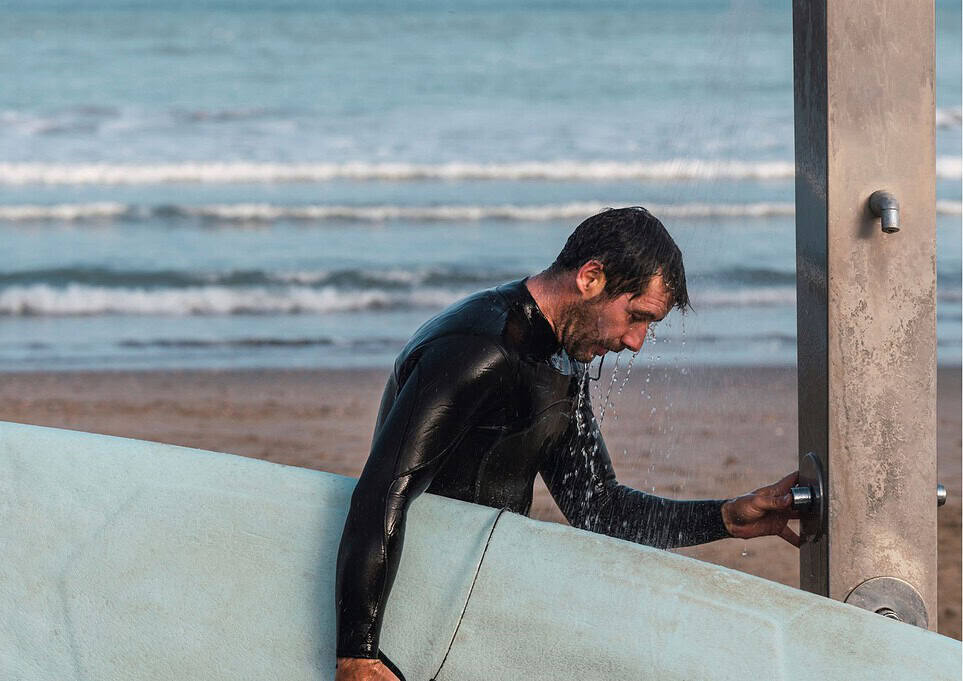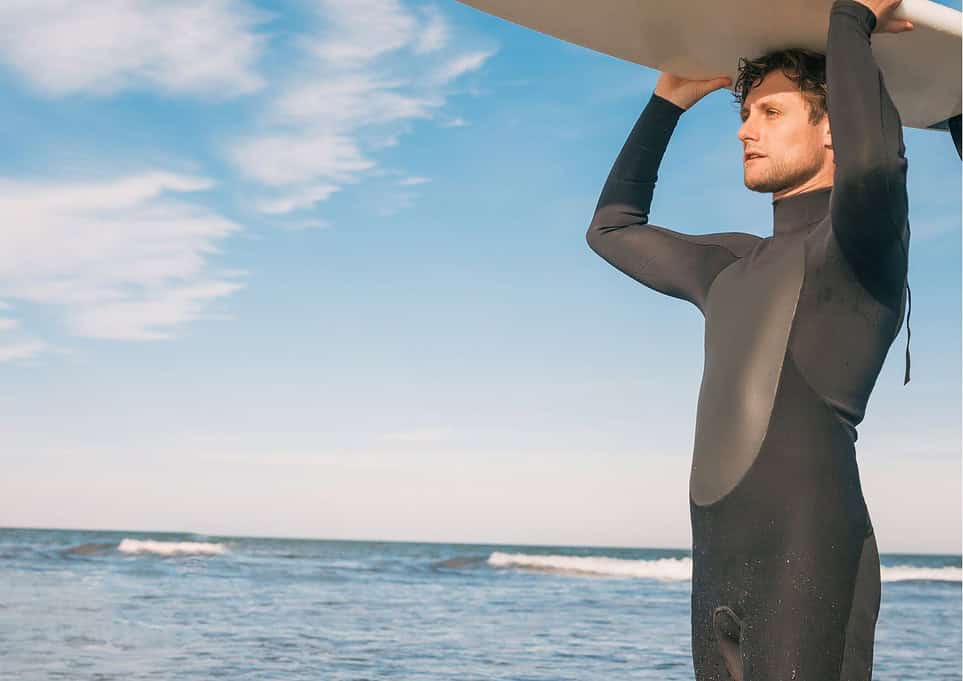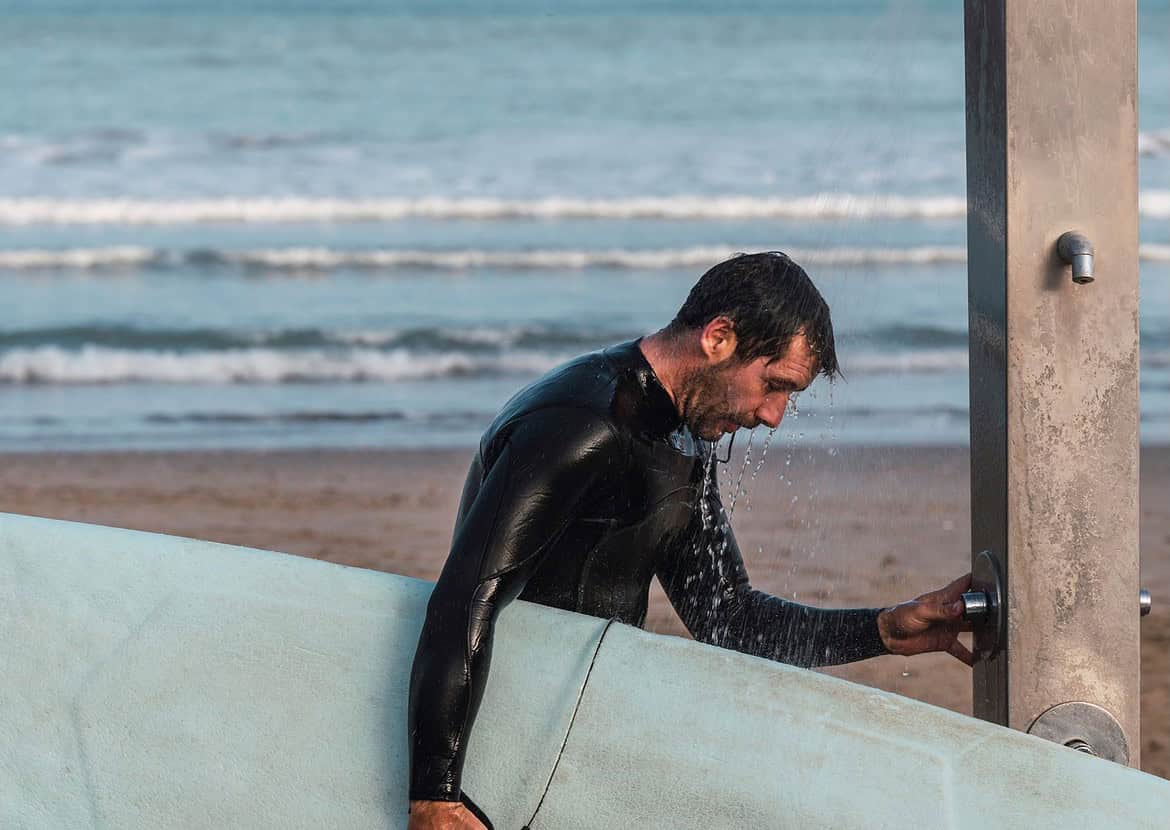Neoprene, this exceptionally flexible material, has almost become synonymous with water sports. From the deep, cold waters of the Atlantic Ocean to the warm summer waves of the Adriatic Sea, neoprene clothing can be found on the bodies of surfers, divers, kayakers, and paddleboarding enthusiasts.
In this article, we will explore how neoprene has transformed the world of water activities, highlighting its key features that make it indispensable, and providing tips on choosing the right neoprene for your activities.
What is Neoprene?
Neoprene, technically called polychloroprene, is a type of synthetic rubber developed by DuPont in the 1930s. This thermoplastic elastomer foam boasts exceptional physical and chemical properties, making it extremely popular for various industrial and consumer uses.
When it comes to neoprene clothing, this material is known for its ability to retain heat, making it ideal for making wetsuits for diving and other water sports. Neoprene clothing not only protects against the cold but also provides some buoyancy and protection from the sun, while neoprene accessories like gloves, socks, and hoods are designed for extra protection and comfort in extreme conditions.

Both neoprene as a material and neoprene clothing have become key elements for water sports enthusiasts and other activities where durable, waterproof protection is needed.
What are the Advantages of Neoprene?
Thermal Insulation to Keep You Warm in All Waters
Whether it’s a cold morning on a Slovenian lake or a dive into the depths of the Atlantic, neoprene with its exceptional thermal insulation protects your body from the cold. This key feature makes you feel like you’re in a second skin that keeps you warm without hindering your movement.
Waterproof Design
When water doesn’t penetrate the material, your body stays dry and warm, which is especially important in cold water conditions. Neoprene acts as waterproof protection, allowing you to enjoy your favorite water activities for longer.
Elasticity for Freedom of Movement
For surfing, paddleboarding, or kitesurfing, you need clothing that moves with you. Neoprene is extremely flexible and stretches in all directions, allowing you complete freedom to perform the most demanding maneuvers.
Protection and Durability that Lasts
Neoprene is not only strong in fighting the cold but also protects against UV rays, wind, and abrasion. It is an extremely resistant material that withstands frequent contact with rough surfaces or harsh sea salt, meaning it will serve you season after season.
Buoyancy for Extra Safety
Neoprene adds not only comfort and warmth but also buoyancy, which can be crucial for safety on the water. A bit of extra help staying afloat is always welcome, especially in unpredictable water conditions.
Hypoallergenic Material for Worry-Free Adventures
For those with sensitive skin, neoprene is an ideal choice as the materials from which it is made reduce the likelihood of allergic reactions. So you can focus on the waves, not on skin rashes.
Types of Neoprene Suits
When choosing the perfect neoprene for your next water adventure, it’s essential to find the right balance between comfort, warmth, and mobility. Here is a guide to different types of neoprene and their characteristics to help you decide.
Full-Length Neoprene Suit
Full-length suits are like a warm blanket on a cold winter morning. They cover you from head to toe, including arms and legs, and are ideal for cold water conditions. Their main advantage is exceptional thermal insulation, allowing you to stay in the water longer.

However, it’s not all rosy: some models can be less flexible, which can limit your freedom to perform water acrobatics. Also, be prepared for a bit of a workout when putting on and taking off these robust suits.
Chest-Zip Neoprene Suits
If you’re among those who like to perform dynamic movements in the water, such as surfing, chest-zip neoprene suits are perfect for you. This style provides a better seal around the neck, reducing the chance of cold water intrusion and allowing you to enjoy your water adventures longer. Additionally, they offer more flexibility in the shoulders, meaning fewer restrictions and more comfort. But keep in mind, they can sometimes be a bit tricky to put on, especially when wet, and often come with a higher price tag.
Back-Zip Neoprene Suits
For those who value speed and ease of dressing, back-zip neoprene suits are the right choice. The long zipper on the back allows for easier entry and exit, which is especially convenient when frequently changing between different water activities.
This type of neoprene is often cheaper, but you should be prepared for the possibility that water may seep in through the zipper during activities in cold water.
When choosing your ideal neoprene, consider the conditions in which you will be using it and what you expect from it. Try different models to find the one that best fits your body and needs, and prepare for unforgettable water adventures.
What Do Different Neoprene Thicknesses Mean?
The thickness of neoprene is a key factor influencing its functionality, especially when talking about clothing for water sports such as diving suits, surfing, and other activities that require thermal protection. Different neoprene thicknesses are intended for different temperature conditions and types of activities.
- 2 mm or Less: This thickness is ideal for warm to moderately warm water (around 22°C and above). Suits with this thickness of neoprene are very flexible and provide minimal thermal protection, making them suitable for summer sports such as surfing, where a lot of movement is required.
- 3 mm: Suits with 3 mm neoprene are versatile and suitable for waters with temperatures around 18°C to 22°C. They offer a good compromise between thermal protection and flexibility, making them popular among surfers, divers, and other water activities in moderately warm waters.
- 5 mm: This thickness is intended for colder waters, around 10°C to 18°C. 5 mm neoprene provides better insulation and is usually chosen for diving and underwater fishing in colder conditions, where retaining heat is crucial.
- 7 mm and More: The thickest suits, often including 7 mm neoprene or even more, are intended for very cold waters (below 10°C). These suits maximize heat retention and are usually equipped with additional seals such as dry zippers to minimize water entry. They are ideal for diving in cold waters, where thermal protection is essential for the diver’s safety and comfort.
Different neoprene thicknesses also affect buoyancy and user mobility. Thicker neoprene increases buoyancy, which can be beneficial for some activities, but reduces flexibility, so it’s important to find the right balance according to specific needs and conditions in which the equipment will be used. Choosing the right thickness of neoprene is therefore crucial for maximum enjoyment and safety in water sports.
Neoprene Must Fit Your Body Properly

Proper fitting of neoprene to your body is crucial for maximum efficiency and comfort during water sports. The neoprene suit should act like a second skin, tightly hugging the body without restricting movement. This is important as a proper fit ensures optimal thermal insulation, preventing water from circulating between the body and the suit, which would carry away body heat.
If the suit is too big, too much water will be trapped between the body and the suit, constantly changing during the activity and causing body heat loss. On the other hand, a suit that is too tight can impede blood circulation and make breathing difficult, reducing efficiency and increasing the risk of hypothermia.
Additionally, a proper fit reduces the risk of chafing and abrasions, increasing comfort during prolonged use. Therefore, it is important to take the time to try different sizes and models to find the neoprene that best fits your body shape and the needs of the specific activity you want to perform.
To ensure that your neoprene lasts as many seasons as possible, we recommend choosing neoprene from a specialized sports store like Bananaway, which will guide you to the best brands such as O’Neill, Prolimit, and Mystic boarding.

